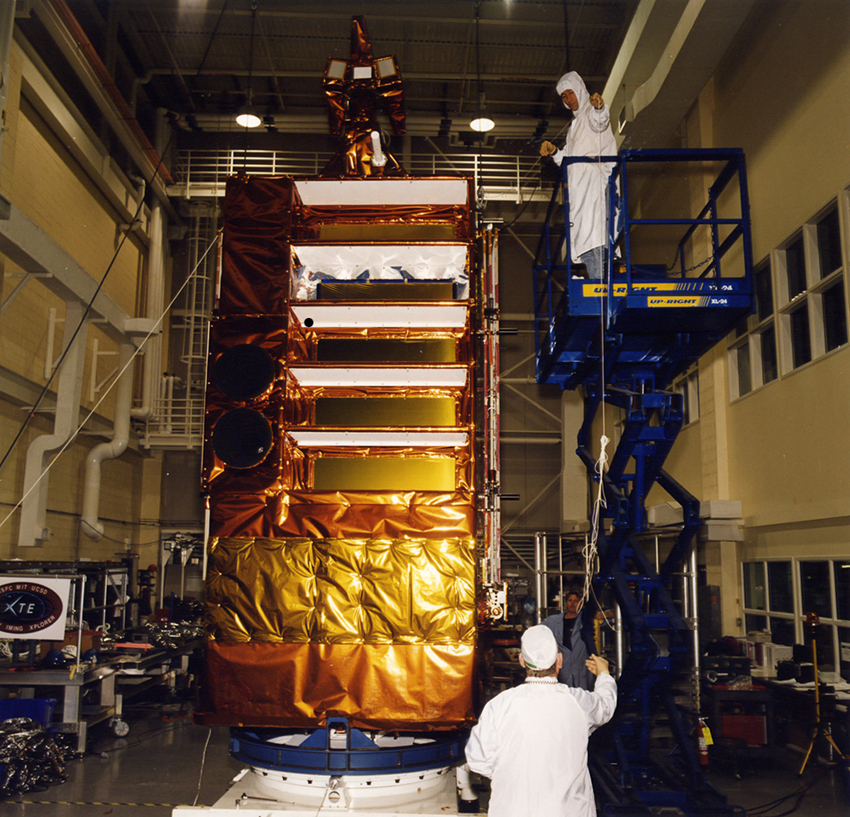
 Credit: NASA
Credit: NASA
Time Flies
The Rossi X-ray Timing Explorer, or RXTE, was launched into orbit on December 30, 1995. RXTE was designed to perform high-time resolution measurements of the changes in X-ray emission from black holes, neutron stars, normal stars and binaries, and active and normal galaxies. During its 16 years of operation, RXTE made many observational breakthroughs, watching matter making its final plunge into a black hole, constraining the extremely high density of matter inside neutron stars, confirming the spin of spacetime around pulsars, probing gravitational radiation from revolving massive bodies, probing the strongest magnets in the Universe, and lots of other "firsts". The image above is RXTE in its younger days, getting ready for launch. After an extremely productive lifetime, RXTE was put out to higher pastures on January 5, 2012. The satellite will be missed by high energy astronomers, but it has left behind a tremendous legacy archive which will provide fertile grounds for researchers for many years to come.
Published: January 9, 2012
<
HEA Dictionary ● Archive
● Search HEAPOW
● Other Languages
● HEAPOW on Facebook
● Download all Images
● Education ● HEAD
>

Each week the HEASARC
brings you new, exciting and beautiful images from X-ray and Gamma ray
astronomy. Check back each week and be sure to check out the HEAPOW archive!
Page Author: Dr. Michael F. Corcoran
Last modified Tuesday, 27-Feb-2024 10:13:30 EST


